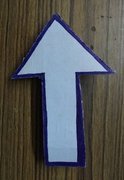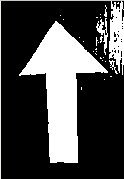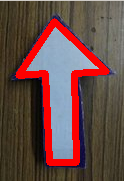Python | Detect Polygons in an Image using OpenCV
Last Updated :
13 Oct, 2019
Approach : The approach we would be used to detect the shape of a given polygon will be based on classifying the detected shape on the basis of a number of sides it has. For example, if the detected polynomial has 3 sides, then it could be considered as a triangle, if the polynomial has 4 sides then it could be classified as a square or a rectangle.
Prerequisite :
- Make sure you have Python3, OpenCV, numpy already installed on your computer.
- Basic knowledge about OpenCV would be helpful – Basics of OpenCV
- Make sure to save the image in which shapes is to be detected in your local directory
Implementation : In the following code, we will be detecting an arrow-shaped object from the image ‘arrow.jpg’. The shape will be detected on the basis of the number of sides it has
Code: Python program to detect polygons in an image
import numpy as np
import cv2
img2 = cv2.imread('arrow.jpg', cv2.IMREAD_COLOR)
img = cv2.imread('arrow.jpg', cv2.IMREAD_GRAYSCALE)
_,threshold = cv2.threshold(img, 110, 255,
cv2.THRESH_BINARY)
contours,_=cv2.findContours(threshold, cv2.RETR_TREE,
cv2.CHAIN_APPROX_SIMPLE)
for cnt in contours :
area = cv2.contourArea(cnt)
if area > 400:
approx = cv2.approxPolyDP(cnt,
0.009 * cv2.arcLength(cnt, True), True)
if(len(approx) == 7):
cv2.drawContours(img2, [approx], 0, (0, 0, 255), 5)
cv2.imshow('image2', img2)
if cv2.waitKey(0) & 0xFF == ord('q'):
cv2.destroyAllWindows()
|
Note : The parameter ‘110’ in threshold could be adjusted as per need if the object is of different colour and is based on trial and error.
Result :
Image with arrow

Binary Image

Outlined Arrow

Share your thoughts in the comments
Please Login to comment...